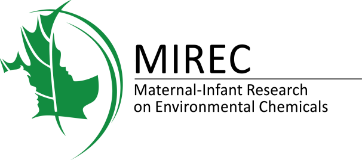
Is there a relationship between tea intake and maternal whole blood heavy metal concentrations?
Colapinto CK, Arbuckle TE, Dubois L, Fraser WD. Journal of Exposure Science and Environmental Epidemiology (2016), 1–7. Advance online publication, 6 January 2016; doi:10.1038/jes.2015.86
Tea is a popular drink worldwide, but the soil where tea crops are grown may be contaminated with metals from industrial pollution or the application of pesticides and fertilizers. Metals can be taken up by the plants and transferred to the leaves which are used to make tea. Fetal exposure to elevated metal levels may cause adverse health effects, including reduced fetal growth and adverse effects on child behavior and IQ. The purpose of this study was to see whether there was an association between the quantity or type of tea that the women reported drinking during pregnancy and the levels of metals measured in their blood. Data from the MIREC Study were used to investigate the association between tea (black, green and herbal) consumption during pregnancy and metal (arsenic, mercury, lead, cadmium and manganese) levels in maternal and umbilical cord blood.
Nearly 2,000 women were included in the MIREC study from 2008 to 2011. Women were grouped into those who drank tea and those who did not, with information on how many cups they consumed per day/week/month and the type of tea (black, green or herbal). Less than 1% of tea drinkers drank all 3 types of tea during their pregnancy, and 10 – 15% reported drinking two types of tea. Data on other types of tea (white and oolong) as well as other specifics (country of origin and length of steeping time) were not available.
Controlling for other factors such as maternal age, household income, highest level of maternal education, country of birth, maternal coffee intake, maternal smoking, exposure to second hand smoke and maternal pre-pregnancy body mass index, the average blood levels of mercury, cadmium and arsenic in maternal — at the first or third trimester — and in cord blood were not significantly different for those who drank any type of tea versus non-tea drinkers. However, average lead levels in the first trimester were slightly higher for tea drinkers than those who did not drink tea (0.65 µg/dl versus 0.61 µg/dl). Women who consumed herbal tea in the third trimester had higher third trimester maternal and cord blood lead concentrations than non-herbal tea drinkers.
Although this study found some associations between blood lead concentrations and tea consumption, the levels measured were still very low (less than 1 µg/dL) and within the normal range of blood lead concentrations in the Canadian population. In addition, these results may be explained by other sources of lead exposure, thus further investigation is needed.
MIREC Année all rights reserved - Privacy policy
Website by Riposte


